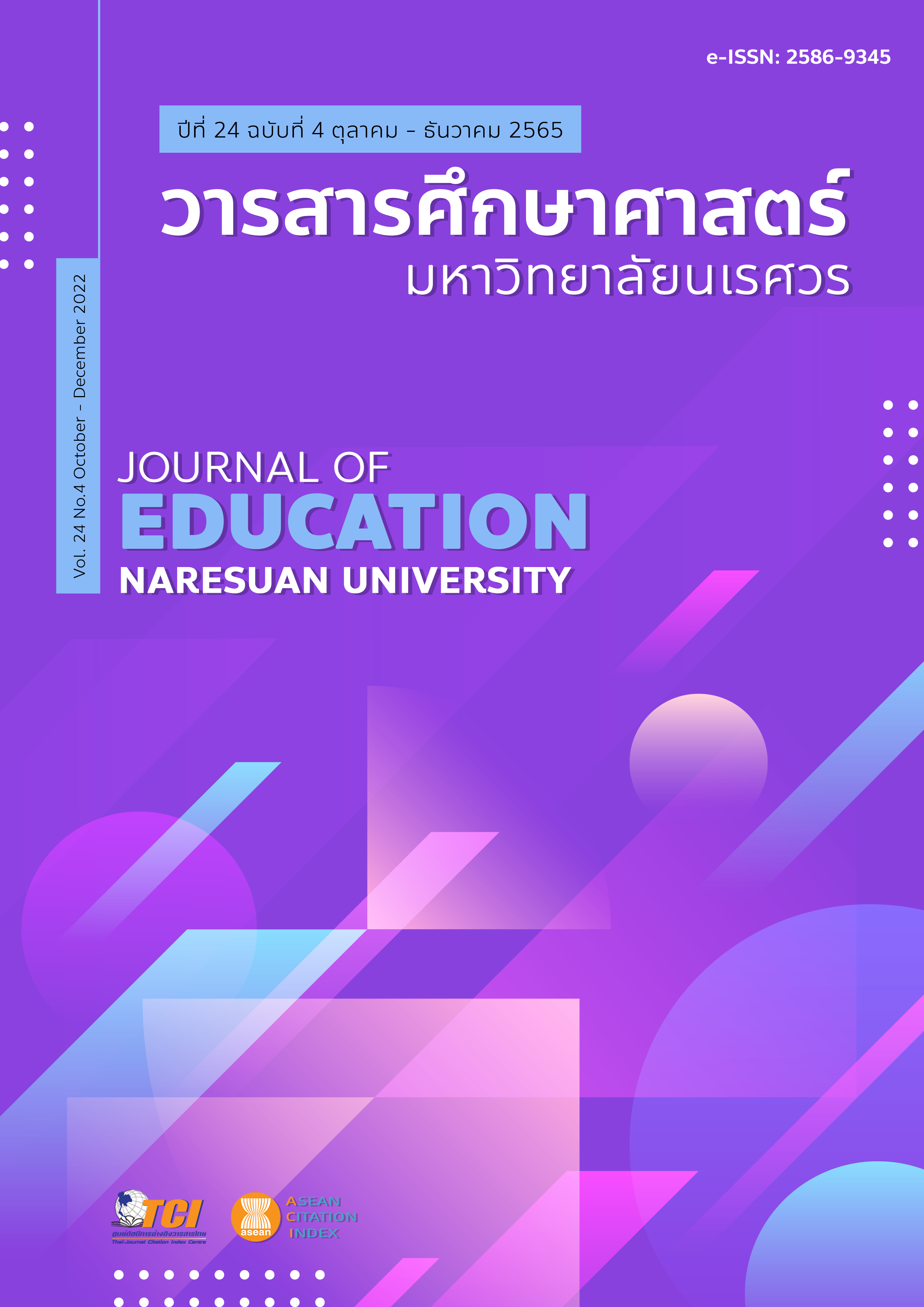การจัดกิจกรรมการเรียนรู้แบบร่วมมือด้วยเทคนิค THINK-PAIR-SHARE-SHOW ร่วมกับการสร้างสรรค์แอนิเมชันด้วยเทคนิค STOP MOTION ARRANGING OF COOPERATIVE LEARNING ACTIVITIES WITH THINK-PAIR-SHARE-SHOW TECHNIQUES TOGETHER WITH ANIMATION CREATION WITH STOP MOTION TECHNIQUE
Main Article Content
บทคัดย่อ
บทความฉบับนี้มีวัตถุประสงค์เพื่อนำเสนอการจัดกิจกรรมการเรียนรู้แบบร่วมมือด้วยเทคนิค Think-Pair-Share-Show ร่วมกับการสร้างสร้างสรรค์แอนิเมชันด้วยเทคนิค Stop Motionจากประสบการณ์การจัดกิจกรรมจริงของผู้เขียน เพื่อให้ผู้สอนสามารถนำไปประยุกต์ใช้ในการจัดกิจกรรมการเรียนรู้ ซึ่งอาจจะเป็นอีกกิจกรรมหนึ่งที่ช่วยส่งเสริมให้ผู้เรียนเกิดทักษะการคิดอย่างมีวิจารณญาณ การทำงานเป็นทีม การสื่อสาร การคิดสร้างสรรค์ และทักษะการใช้เทคโนโลยีสารสนเทศและการสื่อสาร รวมถึงเกิดการเรียนรู้แบบร่วมมือ เป็นการจัดกิจกรรมการเรียนรู้ที่เน้นผู้เรียนเป็นสำคัญ ผู้เรียนจะเรียนรู้อย่างมีความสุข สนุกสนาน เพลิดเพลิน และอาจทำให้ผู้เรียนจดจำและเข้าใจเนื้อหาวิชาได้ดียิ่งขึ้น หากสามารถนำเนื้อหาหรือประเด็นจากเนื้อหามาประยุกต์ใช้ในการจัดกิจกรรม
Article Details

อนุญาตภายใต้เงื่อนไข Creative Commons Attribution-NonCommercial-NoDerivatives 4.0 International License.
เจ้าของบทความมิได้คัดลอก หรือละเมิดลิขสิทธิ์ของผู้ใด หากเกิดการละเมิดลิขสิทธิ์ ไม่ว่าวิธีใด หรือการฟ้องร้องไม่ว่ากรณีใด ๆ ที่อาจเกิดขึ้นได้ กองบรรณาธิการวารสารศึกษาศาสตร์ ไม่มีส่วนเกี่ยวข้องทั้งสิ้น ให้เป็นสิทธิ์ของเจ้าของบทความที่จะดำเนินการ
เอกสารอ้างอิง
Chu-Em, P. (2018). The development of speaking of prathomsueaksa four students by using the think-pair-share technique (Master thesis). Bangkok: Silpakorn University. [in Thai]
Dachakupt, P., & Yindeesuk, P. (2018). 7C Skills of Teachers 4.0. Bangkok: Chulalongkorn University Press. [in Thai]
Jitsupa, J., Jariyatatkone, K., Songsom, N., limsommut, A., Pengwon, T., & Nilsook, P. (2018). The effect of active learning with design and development of animation by students using stop motion technique according to ADDIE Model. The 3rd Suan Dusit Academic National Conference 2018 (pp. 505-511). Bangkok: Suan Dusit University. [in Thai]
Kagan, S. (1994). Co-operative learning. San Juan Capistrano: Kagan Co-operative Learning.
Lyman, F. (1981). The Responsive Classroom Discussion. In A. S. Anderson (Ed.), Mainstreaming Digest
(pp. 109-113). College Park, MD: University of Maryland College of Education.
Lyman, F. (1987). Think-pair-share: An ending teaching technique. MAA-CIE Cooperative News, 1, 1-2.
National Film Board of Canada. (2019). Storyboarding and storytelling. Canada: National Film Board of Canada.
Raba, A. (2017) The Influence of Think-Pair-Share (TPS) on improving students’ oral communication skills in EFL classrooms. Creative Education, 8, 12-23. doi: 10.4236/ce.2017.81002.
Sharma, H. L., & Priyamvada. (2018). TPS (Think-Pair–Share): An effective cooperative learning strategy for unleashing discussion in classroom interaction. International Journal of Research in Social Sciences, 8,5(1), 91-100.
Sun, K. T., Wang, C. H., & Liku, M. C. (2017). Stop-Motion to foster digital literacy in elementary school. Comunicar, 25(51), 93-103. https://doi.org/10.3916/C51-2017-09


